Unlike what people usually expect of indigenous fashion designers, there is not a trace of indigenous pattern found on Juan Chin-Chun. “I have never worn traditional indigenous clothing before, and I will probably still find it awkward,” Juan Chin-Chun said after some thought.
Perhaps, it's because he grew up distant from his traditional culture. Although he is now a professional designer of traditional indigenous clothing and spends much of his time researching the context of changes to the Paiwan patterns on clothing, for Juan Chin-Chun, he is still somewhat conflicted about putting on indigenous clothing or the traditional indigenous clothes he personally designed.
Born in Neishi Village in Shizi Township, Pingtung County and as a member of the Southern Paiwan group, Juan Chin-Chun's village was relocated to the current site during the Japanese ruling, far away from the mountains where they live their lives no different from non-indigenous people. “As far as I recalled, I never really noticed any difference between myself and the non-indigenous people,” said Juan Chin-Chun.
Growing up with a keen interest in design and arts, Juan Chin-Chun chose fashion design as his major in university. In 2008, he was invited back by his hometown library to curate an exhibition on traditional Paiwan clothing. Originally more into western styles of design, as he sieved through materials for curation, he realized that the culture he never really knew was in fact filled with treasures so rich and beautiful.
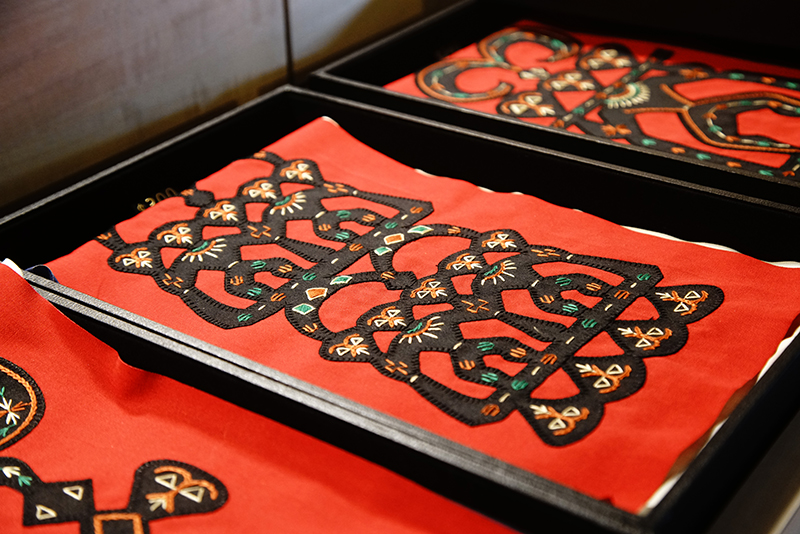
The human and serpentine patterns are usually presented in black and red colors, they are the most commonly used patterns of the Southern Paiwan group in Pingtung.
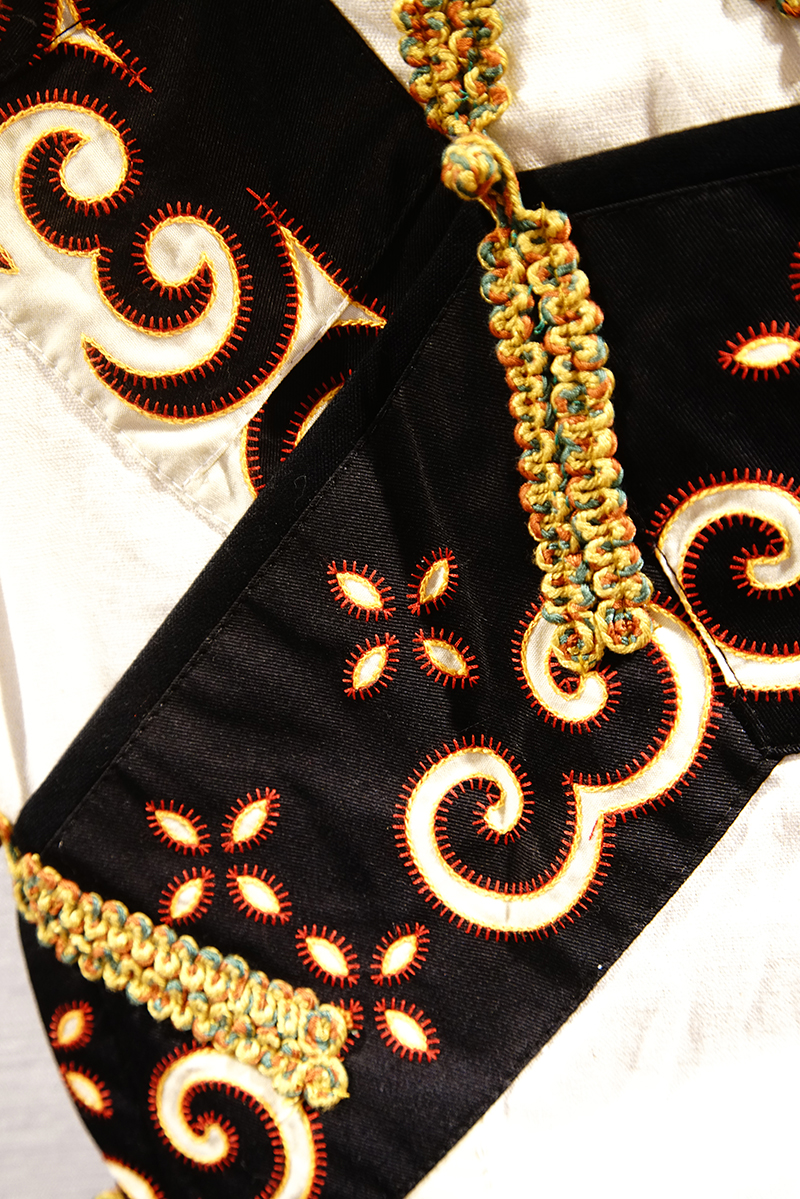
The abstract curve patterns are often seen in black and white colors, and mostly interpreted as the butterfly pattern. In addition to the North Paiwan group in Pingtung, the pattern in also widely used by the Rukai people.
Pattern Design
as Record of the Present
At the end of the exhibition, Juan Chin-Chun decided to stay home and established the Parucunuq Craft Studio. Through literature review and interviewing elders in different indigenous villages, he slowly researched the embroidery patterns, crafts and changes occurred to the techniques of Paiwan clothing, and gradually accumulated a vast database of hundreds of patterns and styles for the Paiwan group according to the Northern, Central and Southern Paiwan group.
Using the pattern database as foundation and out of respect to the cultural symbolization of traditional patterns, he disassembled the patterns and used them as design elements, rearranged them according to the concept of modern fashion design to create traditional clothes with a sense of modern aesthetics. He further introduced the western tailoring to improve the creases which often occur in traditional 2-dimensional cutting, demonstrating a sleeker style.
The more conservative groups may criticize him for the disassembling and rearranging of traditional patterns, but Juan Chin-Chun believes that “patterns reflect the record of thoughts and creations of the present, regardless of the ethnic group.” The patterns created by our ancestors document their thoughts of nature and life, not only do the patterns demonstrate the variant and colorful lifestyles back then, but how the lifestyles have become the customs and norms we follow after years of succession and development.
Juan Chin-Chun believes that we must first bear in mind that the meaning of pattern “creation” outweighs “the rules”. He also noticed that the displays of same patterns somewhat vary in different areas and different indigenous villages, which also goes to show that the patterns were not defined in the first place, but gradually evolved through time to contain the cultural meanings we see nowadays, “recreating traditional patterns is also a way for us to record our understanding and demonstration of the Paiwan culture.”
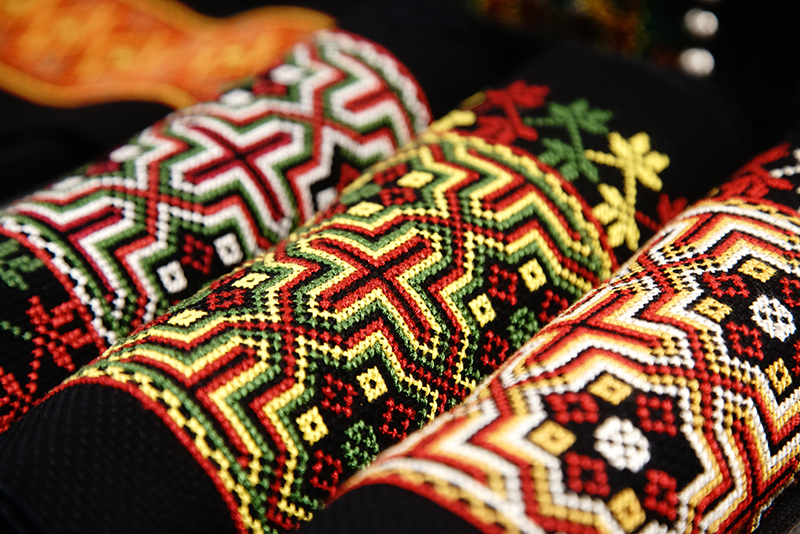
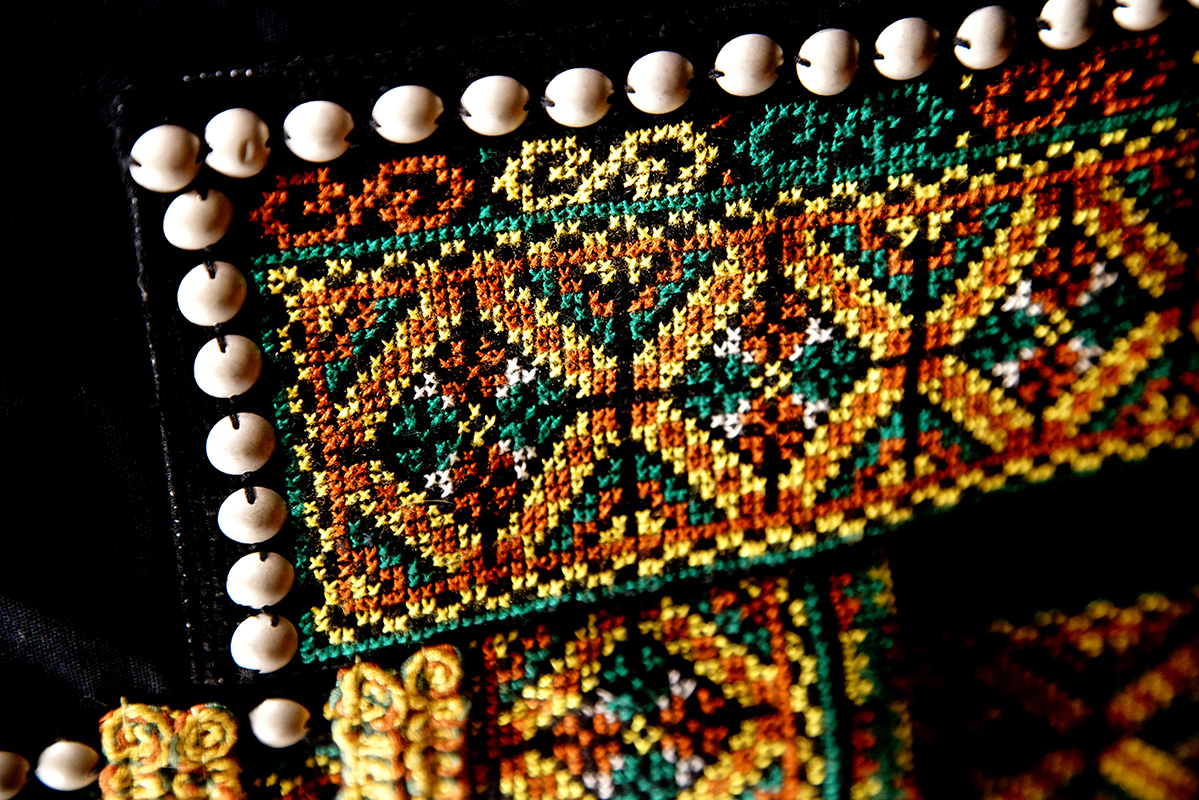
The geometrical diamond and octagonal patterns are often seen in red, yellow and green, and also commonly used by the Northen Paiwan group in Pingtung and the Rukai people.
Fusing Tradition with Modernity
Creating a Fashion Trend Unique to the Paiwan People
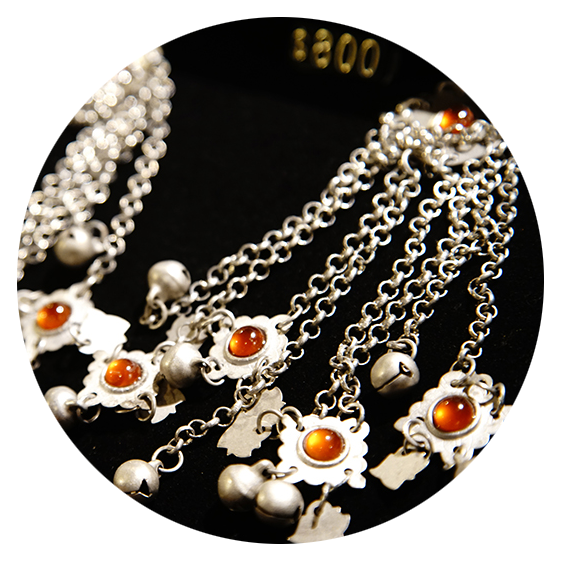
Under the influence of modern civilization, traditional clothing is often considered attire for important occasions only. But, as explained by Juan Chin-Chun, “we have traditional indigenous clothing for everyday wear and important occasions, other than dressing up for rituals and weddings, many Central and Northern Paiwan people are still in the habit of wearing indigenous clothing every day.”
Even though the habit remains to wear traditional clothing, the tradition of weaving and sewing your own clothes in the family no longer suit the modern lifestyle. Such demand and supply gave rise to the industry of traditional indigenous clothing. “Albeit small, this market has always existed. For example, my studio mainly served the Paiwan and some Rukai people.” Juan Chin- Chun said that amongst the upstream, midstream and downstream of the traditional indigenous clothing industry supply chain, clothing design is the midstream. After he completes the pattern and style design, it will be completed by the downstream according to the requirements of beadwork, cross-stitch, and embroidery appliqué, before the garment is ready to be sold.
Clothing is a part of our daily life and carries more than the meaning of cultural heritage, it requires change due to practical demands, modern life and fashion trend. For example, Juan Chin-Chun mentioned, the everyday wear of the Paiwan female is a set of long shirt plus leggings. Over a decade ago, to make it easier for movements, the long shirt was shortened and waistline accentuated. In recent years, tulle skirt is in trend and many indigenous female like to wear traditional long shirt with different colors of tulle skirt, or pair it with jeans and boots. Not only is it unique, it is also a very fashionable fusion.
“We have our own 'trend' in terms of wearing Paiwan traditional clothing.” Juan Chin-Chun smiled and mentioned that he noticed a significant increase in the Paiwan population in wearing traditional clothing, partly because of the increase of indigenous awareness and identity, but also because the church encourage indigenous peoples attend church in indigenous clothes. “Especially the younger generation, they have a very strong sense of ethnic identity, they put on indigenous clothes to demonstration self-identification, and portray their character by the uniqueness of indigenous clothes.”
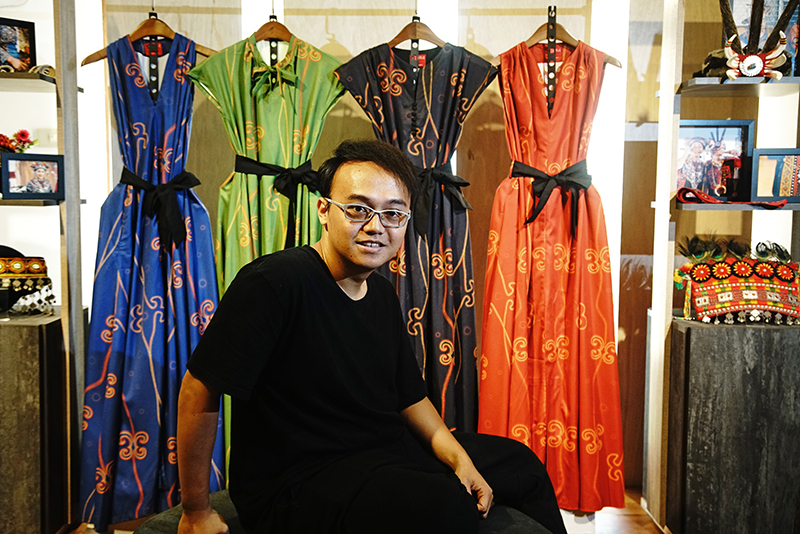
Feeling the stereotypical errors of traditional culture inheritance, Paiwan designer Juan Chin-Chun cleverly combines western elements and indigenous patterns into a beautiful long dress, attracting the attention many non-indigenous people.
Pattern Print in Fashion
Only in Pingtung
Juan Chin-Chun picks up a sleeveless one-piece from the window display, the black ribbon accentuating the waistline and brightcolored print fabric showing butterfly patterns, elegant and graceful. This dress is a fusion of Paiwan pattern and western design, very popular amongst tourists, “I noticed that those who tried it on and placed orders are mostly non-indigenous people.”
The studio focuses mostly on traditional clothing, but also designs modern clothes fusing traditional patterns. Three years ago, combining the butterfly pattern common to the Northern Paiwan and the Rukai people, Juan Chin- Chun produced a print fabric for his clients to turn into clothes, bags and home accessories, hoping to expand the market. In order to demonstrate the variety of uses for this print fabric, he also designed a one-piece.
At the end of 2019, he set up a showroom, No. 83 Ching-Dao, in the VICTORYSTAR in Pingtung Zone. He originally designed the one-piece for window display, but surprisingly it attracted many non-indigenous tourists, a true embodiment of an uniqueness found only in Pingtung. With the recognition received, Juan Chin-Chun saw a potential in the fashion market and it inspired him to continue his development in print fashion, “this is what I've always wanted to do, break free from the boxes of ethnicity and indigenous cultures, and bring them closer to the public through patterns.”
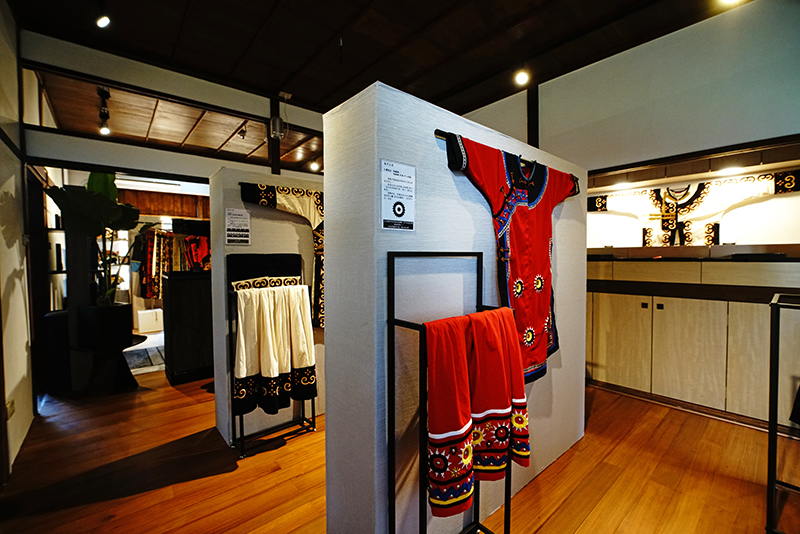
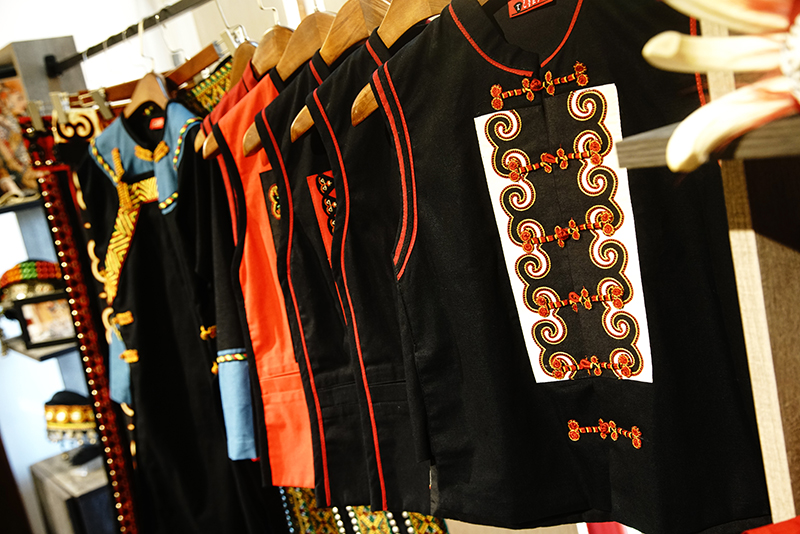
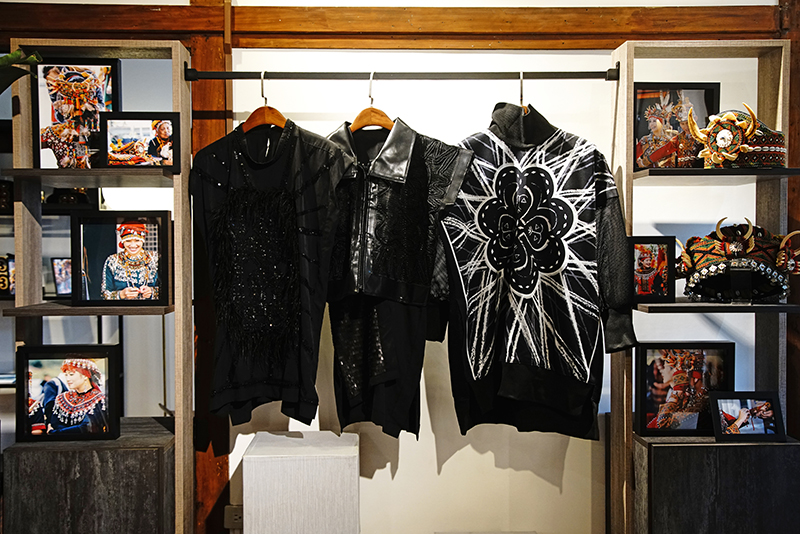
Juan Chin-Chun can combine elements of the Paiwan patterns with different designs and cuttings, from formal attire, everyday wear to contemporary fashion.
Ready-to-use Embroidery Appliqué
A Continuation of Indigenous Cultures
Juan Chin-Chun sees all too clearly the urgency of cultural heritage, so he developed ready-to-use embroidery appliqués with local patterns for Paiwan groups from different areas, so his clients can apply them to bags or clothes themselves. He admits that people criticized his action, claiming that commercialized machine-made embroidery appliqués will “further draw people away from hand-embroidered traditional patterns”. But he believes that the reason the Paiwan traditional hand-made embroidery skill is facing extinction is precisely because it is time and labor consuming. Right now, the most important work is to record the different patterns from different areas so that our future generations can understand the context of the patterns of the group.
Cultural heritage relies on more than just the sense of mission, through popularized commercialization coupled with the introduction of creative energy, we will see continuation of the vitality of culture. “I am from the Southern Paiwan group, not the mainstream Paiwan culture. I, too, am concerned that once the skills are lost or if the market becomes too small, no one can make clothes using the Southern Paiwan patterns and can only replace them with patterns from other groups. When that happens, our future generations will never learn of our culture.” Even though Juan Chin-Chun still finds it awkward wearing indigenous clothes, he is more than determined when it comes to the promotion and heritage of traditional indigenous clothes.




